Share this
capillary puncture sites: 5 common methods
by Neoteryx Microsampling on Jan 23, 2018 5:15:00 AM
-1-1.jpeg?width=300&height=205&name=collection-Mitra-anywhere-car%20(2)-1-1.jpeg) Capillary blood sampling provides a less invasive alternative to venipuncture, requiring only small volumes, typically tens of microliters, to test for conditions such as anemia, blood sugar levels, thyroid hormones, drug concentrations, and more.
Capillary blood sampling provides a less invasive alternative to venipuncture, requiring only small volumes, typically tens of microliters, to test for conditions such as anemia, blood sugar levels, thyroid hormones, drug concentrations, and more.
However, the location of the puncture site is crucial for obtaining an adequate sample. Selecting the right site helps to maximize blood flow, minimize pain, and prevent complications. Here are five commonly used sites for capillary puncture:
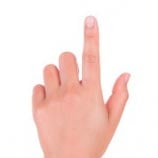 Finger (Fingertip)
Finger (Fingertip)
For both adults and children, the third or fourth finger is typically the preferred choice for puncture. Avoid using the thumb (which may cause excessive bleeding), the index finger (often calloused or sensitive), and the little finger (which has insufficient tissue). Puncture the palmar surface either to the left or right of the midline, staying clear of the fingernails.
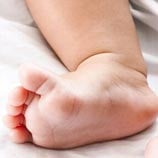 Heel
Heel
This puncture site is used for newborns and infants, less than one year old, because their fingers are too tiny for finger-stick blood collection. The puncture is done on the farthest lateral or medial aspect of the plantar surface of the heel, not on the bottom. Punctures done on the plantar surface can potentially damage cartilage or bone.
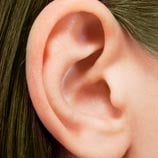 Ear lobe
Ear lobe
The ear lobe has been used for capillary blood sampling but is no longer recommended. Studies have shown that the blood flow in the ear lobe is less than that in either the fingertip or the heel. The ear lobe can still be used if no other site is available.
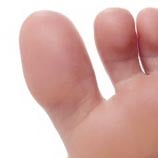 Great toe (Big toe)
Great toe (Big toe)
The big toe can be used, if necessary, in infants who are not yet walking. Callous formation after a child starts walking can interfere with blood collection and is a contraindication. The site should be lateral to the midline of the plantar surface of the toe. Only the great toe has the amount of tissue necessary to protect the bone from injury.
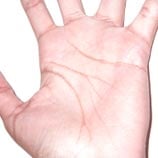 Palm
Palm
There are two areas on the palm that can be used, if necessary. Especially in diabetics who test their own blood sugars frequently, alternate sites give some relief from reusing the same sites over and over. The thenar (fleshy mound at base of thumb) and hypothenar (fleshy mound at base of fourth finger) eminences have capillary circulation equivalent to the fingertip. Some people sample from the "heel" of the hand, though this may not produce enough sample volume.
Best Practices & Things to Keep in Mind
- Always clean and sterilize the puncture site properly.
- Avoid the fingernail and calloused areas.
- Ensure a gentle poke, using the correct lancet depth.
- Discard the first drop of blood (can be diluted with interstitial fluid).
- Rotate sites when possible to avoid soreness and callous formation.
- For infants, always handle heel and toe sites carefully to avoid damage and discomfort.
Learn more about what industries have adopted capillary blood microsampling.

Share this
- Microsampling (206)
- Research, Remote Research (119)
- Venipuncture Alternative (105)
- Clinical Trials, Clinical Research (83)
- Mitra® Device (73)
- Therapeutic Drug Monitoring, TDM (51)
- Dried Blood Spot, DBS (39)
- Biomonitoring, Health, Wellness (30)
- Infectious Disease, Vaccines, COVID-19 (24)
- Blood Microsampling, Serology (23)
- Omics, Multi-Omics (21)
- Decentralized Clinical Trial (DCT) (20)
- Specimen Collection (18)
- Toxicology, Doping, Drug/Alcohol Monitoring, PEth (17)
- Skin Microsampling, Microbiopsy (14)
- hemaPEN® Device (13)
- Preclinical Research, Animal Studies (12)
- Pharmaceuticals, Drug Development (9)
- Harpera Device (7)
- Industry News, Microsampling News (5)
- Antibodies, MAbs (3)
- Company Press Release, Product Press Release (3)
- Environmental Toxins, Exposures (1)
- July 2025 (1)
- May 2025 (1)
- April 2025 (2)
- December 2024 (2)
- November 2024 (1)
- October 2024 (3)
- September 2024 (1)
- June 2024 (1)
- May 2024 (1)
- April 2024 (4)
- March 2024 (1)
- February 2024 (2)
- January 2024 (4)
- December 2023 (3)
- November 2023 (3)
- October 2023 (3)
- September 2023 (3)
- July 2023 (3)
- June 2023 (2)
- April 2023 (2)
- March 2023 (2)
- February 2023 (2)
- January 2023 (3)
- December 2022 (2)
- November 2022 (3)
- October 2022 (4)
- September 2022 (3)
- August 2022 (5)
- July 2022 (2)
- June 2022 (2)
- May 2022 (4)
- April 2022 (3)
- March 2022 (3)
- February 2022 (4)
- January 2022 (5)
- December 2021 (3)
- November 2021 (5)
- October 2021 (3)
- September 2021 (3)
- August 2021 (4)
- July 2021 (4)
- June 2021 (4)
- May 2021 (4)
- April 2021 (3)
- March 2021 (5)
- February 2021 (4)
- January 2021 (4)
- December 2020 (3)
- November 2020 (5)
- October 2020 (4)
- September 2020 (3)
- August 2020 (3)
- July 2020 (6)
- June 2020 (4)
- May 2020 (4)
- April 2020 (3)
- March 2020 (6)
- February 2020 (3)
- January 2020 (4)
- December 2019 (5)
- November 2019 (4)
- October 2019 (2)
- September 2019 (4)
- August 2019 (4)
- July 2019 (3)
- June 2019 (7)
- May 2019 (6)
- April 2019 (5)
- March 2019 (6)
- February 2019 (5)
- January 2019 (8)
- December 2018 (3)
- November 2018 (4)
- October 2018 (7)
- September 2018 (6)
- August 2018 (5)
- July 2018 (8)
- June 2018 (6)
- May 2018 (5)
- April 2018 (6)
- March 2018 (4)
- February 2018 (6)
- January 2018 (4)
- December 2017 (2)
- November 2017 (3)
- October 2017 (2)
- September 2017 (4)
- August 2017 (2)
- July 2017 (4)
- June 2017 (5)
- May 2017 (6)
- April 2017 (6)
- March 2017 (5)
- February 2017 (4)
- January 2017 (1)
- July 2016 (3)
- May 2016 (1)
- April 2016 (2)


Comments (4)